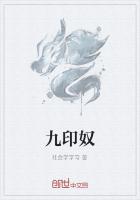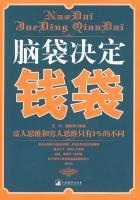The first sub-family is the entirely extinct group of Hyracodonts, which may be traced in successive modifications through the upper Eocene, lower and middle Oligocene, then disappearing altogether. As yet, the hyracodonts have been found only in North America, and the last genus of the series, Hyracodon, was a cursorial animal. Very briefly stated, the modifications consist in a gradual increase in size, with greater slenderness of proportions, accompanied by elongation of the neck, limbs, and feet, which become tridactyl and very narrow. The grinding teeth have assumed the rhinoceros-like pattern and the premolars resemble the molars in form; on the other hand, the front teeth, incisors and canines, have become very small and are useless as weapons. As the animal had no horns, it was quite defenceless and must have found its safety in its swift running, for Hyracodon displays many superficial resemblances to the contemporary Oligocene horses, and was evidently adapted for speed. It may well have been the competition of the horses which led to the extinction of these cursorial rhinoceroses.
The second sub-family, that of the Amynodonts, followed a totally different course of development, becoming short-legged and short-footed, massive animals, the proportions of which suggest aquatic habits; they retained four digits in the front foot. The animal was well provided with weapons in the large canine tusks, but was without horns. Some members of this group extended their range to the Old World, but they all died out in the middle Oligocene, leaving no successors.
The sub-family of the true rhinoceroses cannot yet be certainly traced farther back than to the base of the middle Oligocene, though some fragmentary remains found in the lower Oligocene are probably also referable to it. The most ancient and most primitive member of this series yet discovered, the genus Trigonias, is unmistakably a rhinoceros, yet much less massive, having more the proportions of a tapir; it had four toes in the front foot, three in the hind, and had a full complement of teeth, except for the lower canines, though the upper canines are about to disappear, and the peculiar modification of the incisors, characteristic of the true rhinoceroses, is already apparent; the skull is hornless.
Representatives of this sub-family continue through the Oligocene and Miocene of North America, becoming rare and localised in the Pliocene and then disappearing altogether. In the Old World, on the other hand, where the line appeared almost as early as it did in America, this group underwent a great expansion and ramification, giving rise not only to the Asiatic and African forms, but also to several extinct series.
Turning now to the Artiodactyla, we find still another group of mammals, that of the camels and llamas, which has long vanished from North America, yet took its rise and ran the greater part of its course in that continent.
From the lower Eocene onward the history of this series is substantially complete, though much remains to be learned concerning the earlier members of the family. The story is very like that of the horses, to which in many respects it runs curiously parallel. Beginning with very small, five-toed animals, we observe in the successive genera a gradual transformation in all parts of the skeleton, an elongation of the neck, limbs and feet, a reduction of the digits from five to two, and eventually the coalescence of the remaining two digits into a "cannon-bone." The grinding teeth, by equally gradual steps, take on the ruminant pattern. In the upper Miocene the line divides into the two branches of the camels and llamas, the former migrating to Eurasia and the latter to South America, though representatives of both lines persisted in North America until a very late period. Interesting side-branches of this line have also been found, one of which ended in the upper Miocene in animals which had almost the proportions of the giraffes and must have resembled them in appearance.
The American Tertiary has yielded several other groups of ruminant-like animals, some of which form beautifully complete evolutionary series, but space forbids more than this passing mention of them.
It was in Europe that the Artiodactyla had their principal development, and the upper Eocene, Oligocene and Miocene are crowded with such an overwhelming number and variety of forms that it is hardly possible to marshal them in orderly array and determine their mutual relationships.
Yet in this chaotic exuberance of life, certain important facts stand out clearly, among these none is of greater interest and importance than the genealogy of the true Ruminants, or Pecora, which may be traced from the upper Eocene onward. The steps of modification and change are very similar to those through which the camel phylum passed in North America, but it is instructive to note that, despite their many resemblances, the two series can be connected only in their far distant beginnings. The pecoran stock became vastly more expanded and diversified than did the camel line and was evidently more plastic and adaptable, spreading eventually over all the continents except Australia, and forming to-day one of the dominant types of mammals, while the camels are on the decline and not far from extinction. The Pecora successively ramified into the deer, antelopes, sheep, goats and oxen, and did not reach North America till the Miocene, when they were already far advanced in specialisation. To this invasion of the Pecora, or true ruminants, it seems probable that the decline and eventual disappearance of the camels is to be ascribed.
Recent discoveries in Egypt have thrown much light upon a problem which long baffled the palaeontologist, namely, the origin of the elephants.
(C.W. Andrews, "On the Evolution of the Proboscidea", "Phil. Trans. Roy.















